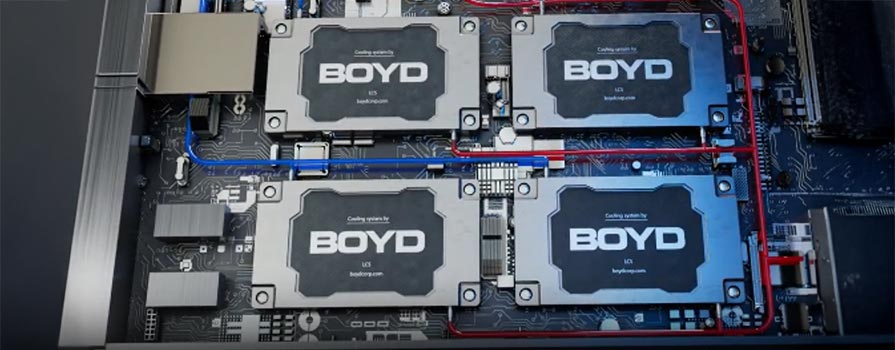Safeguarding the EV Revolution: Advanced Materials for Battery Protection
Electric vehicles (EVs) revolutionize transportation, and their success hinges on the safety and efficiency of the battery systems and materials used within them. The global sustainable battery materials market size is expected to reach USD 78.23 billion by 2030, reflecting growing demand for safe and efficient EV battery systems and materials. EV battery protection is critical to reduce thermal runaway events, mechanical damage, and electrical failures to prevent catastrophic outcomes. EV battery protection materials mitigate these risks when used in the right way, ensuring EV longevity and safety. Boyd leads EV battery protection with trusted innovation in transforming advanced materials into easy-to-assemble deployable product technologies that enhance battery safety and performance.


EV Battery Protection: A Material Showdown
Electric vehicle (EV) battery safety is essential to ensure longevity and prevent extreme EV failures. Manufacturers must employ advanced materials with unique strengths in EV battery protection. These advanced materials include mica, intumescent materials, and ablative coatings. Each material offers unique properties and benefits suitable for different aspects of battery protection.
Mica
Mica, a group of silicate minerals, offers excellent protection for EV batteries. It splits into extremely thin, elastic plates and comes in two main types: muscovite, which withstands temperatures up to 800°C, and phlogopite, which tolerates temperatures above 1000°C. Mica is available in both rigid sheets and flexible rolls and is often mixed with silicone. It is used under battery lids, covers, and separators, providing high-temperature insulation and structural protection. Mica offers good thermal resistance, high dielectric insulation, and cost-effectiveness. However, mica poses challenges like ethical concerns in mining, susceptibility to cracking or flaking, and processing difficulties.
Intumescent Materials
Intumescent materials, which swell when exposed to heat, play a crucial role in EV battery protection. These materials form a heat insulating microporous char, effectively slowing thermal runaway events. This char consists of microporous carbonaceous foam formed by a chemical reaction of three main components: ammonium polyphosphate, pentaerythritol, and melamine. These materials fill air spaces during thermal runaway, release water vapor to cool the event, and provide a flame barrier. However, they may activate at normal cell charging temperatures, causing dimensional instability and releasing moisture into the battery pack.
Ablative Materials
Ablative materials shield EV batteries by absorbing heat and particulates during thermal runaway events. Designed to withstand high temperatures, these materials undergo physicochemical transformations to create effective thermal and particulate barriers. Boyd provides solutions like ablative coatings and heat shielding composites formulated with these materials as additives in high-temperature resin compounds. Compared to mica, which reflects heat, ablative materials offer superior protection by absorbing both heat and particulates, preventing them from causing secondary damage. These materials maintain dimensional stability throughout thermal events.
Shielding the Future: Boyd Transforms Advanced Materials into EV Battery Protection Solutions
Boyd’s material science heritage spans 70+ decades. We leverage that expertise to assist customers in selecting the best advanced material for their application requirements from a comprehensive suite of EV battery protection materials. Once the best material is identified, our experienced EV battery protection engineers design a product for you that features your selected material, custom to your EV model. Your EV battery protection products are then manufactured in IATF 16949 manufacturing facilities to deliver ready-to-assemble EV battery protection product technologies.
We offer key materials for each EV battery protection category:
Mica: The High-Temperature Defender
Mica excels in high-temperature insulation, making it a vital component for EV batteries. Boyd offers a wide selection of both rigid and flexible mica solutions, including mica tapes. We source mica from reputable suppliers, ensuring both quality and ethical practices.Intumescent Materials: Swell to Quell
Boyd addresses the potential challenge of premature activation at charging temperatures of intumescent materials by offering advanced solutions. We combine polymers and thermoplastics with strategically formulated intumescent additives and collaborate with leading flame barrier material technologists to provide a comprehensive range of high performance options.Ablative Materials: Absorbing Heat
For the most demanding thermal runaway scenarios, ablative materials are the ultimate solution. Boyd offers a range of ablative solutions, including ablative coatings used as additives in high-temperature resin compounds and heat shielding composite materials. Our portfolio includes specific products like:
- BCTRP-101-1000: Single-sided glass cloth with ablative coating for protecting aluminum or PC substrates.
- BCTRP-101-1023: Double-sided glass cloth with a high-blast-resistant ablative center, ideal for steel substrates.
- BCTRP-101-1001: This thermal barrier features added high-temperature silicone/ceramic compression foam, specifically designed for use as compression pads.
Boyd: Shielding Innovation for Safe and Sustainable EVs
Boyd’s deep understanding of advanced materials positions us as a critical partner for the future of EV battery safety. Our commitment to quality, ethical sourcing, and innovative solutions ensures that we provide the most effective materials to safeguard EV batteries. Our comprehensive suite of advanced materials like mica, intumescent materials, and ablative materials, addresses various protection needs within the battery pack. We prioritize responsible sourcing and continuous innovation and transform these advanced materials into deployable technologies that are custom designed to easily integrate into your battery packs. Partner with Boyd to gain access to industry-leading materials, expertise, and custom designed products to ensure safety, longevity, and optimal performance of batteries.
Contact us to learn more about our EV battery solutions.







